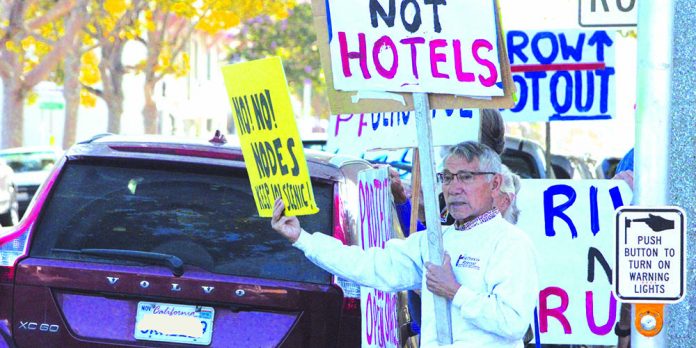2020 was the year of the highway node for some in San Benito County, as the four pieces of property targeted for service-oriented commercial development keep coming back to life.
In the March 3 election, voters overwhelmingly rejected Measure K, which would have created a new commercial zoning for the four properties along Highway 101 known as C-3. The measure was rejected by about 60 percent of voters who cast ballots.
But the saga continued from there, as the owners of the nodes have applied for and, in at least two cases, been granted another commercial zoning known as C-1.
Measure K made it to the ballot following a successful signature-gathering campaign by the citizens group Preserve Our Rural Communities. The intent of their petition was to repeal an ordinance approved by the county supervisors in September 2019 that would have converted four properties at highway interchanges to the regional commercial C-3 zoning.
But the March 3 vote reversed that ordinance.
The four interchanges outlined in the ordinance are the Betabel Road and Highway 129/Searle Road interchanges in San Juan Bautista, and the Rocks Ranch and 101 Livestock Market interchanges in Aromas.
In April, Betabel Road node owner Rider McDowell applied for and was granted the alternate C-1 zoning for his property. Then earlier in December, the supervisors approved a C-1 zoning for the Searle Road property.
The C-1 zoning classification shares some similarities with the C-3 zoning in terms of building standards and permitted uses. However, it is less restrictive in other areas, such as landscaping, theme and tourism aspects.
McDowell plans to build a 1950s-inspired California roadside stop, with wooden barns, local produce, a service station with gas and diesel and a vintage motel.
The owner of the Searle Road site has not yet proposed a development.
Members of PORC attempted to stop the Betabel C-1 rezoning, claiming it would violate the spirit of the March 3 election results on Measure K. The group filed a lawsuit against the supervisors’ decision, and a judge gave PORC more time to collect signatures for another referendum. However, they were unable to collect enough signatures to place the item on another future ballot.
County officials have argued that developing the nodes—which collectively total more than 300 acres—in accordance with the general plan would bring much-needed tax revenue and jobs to San Benito County.
Opponents of node development argue that the projects would only create more traffic and environmental impacts.










